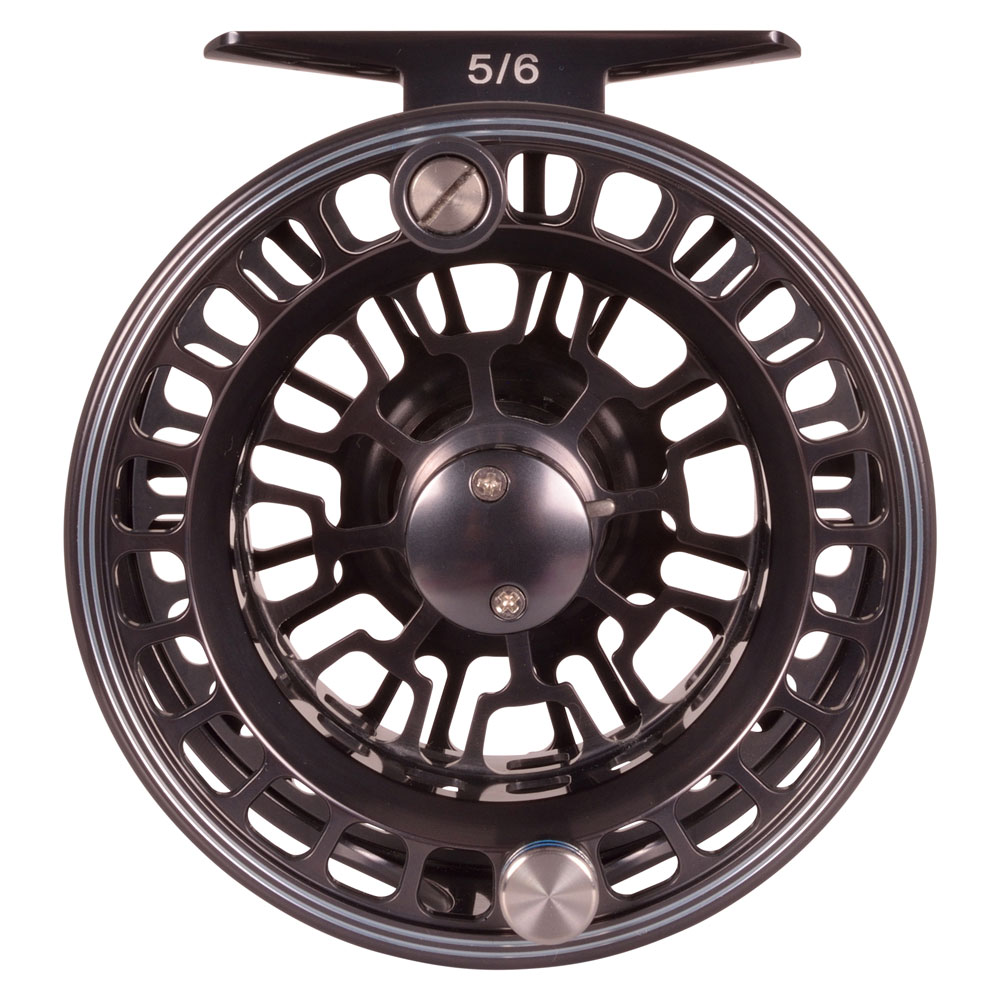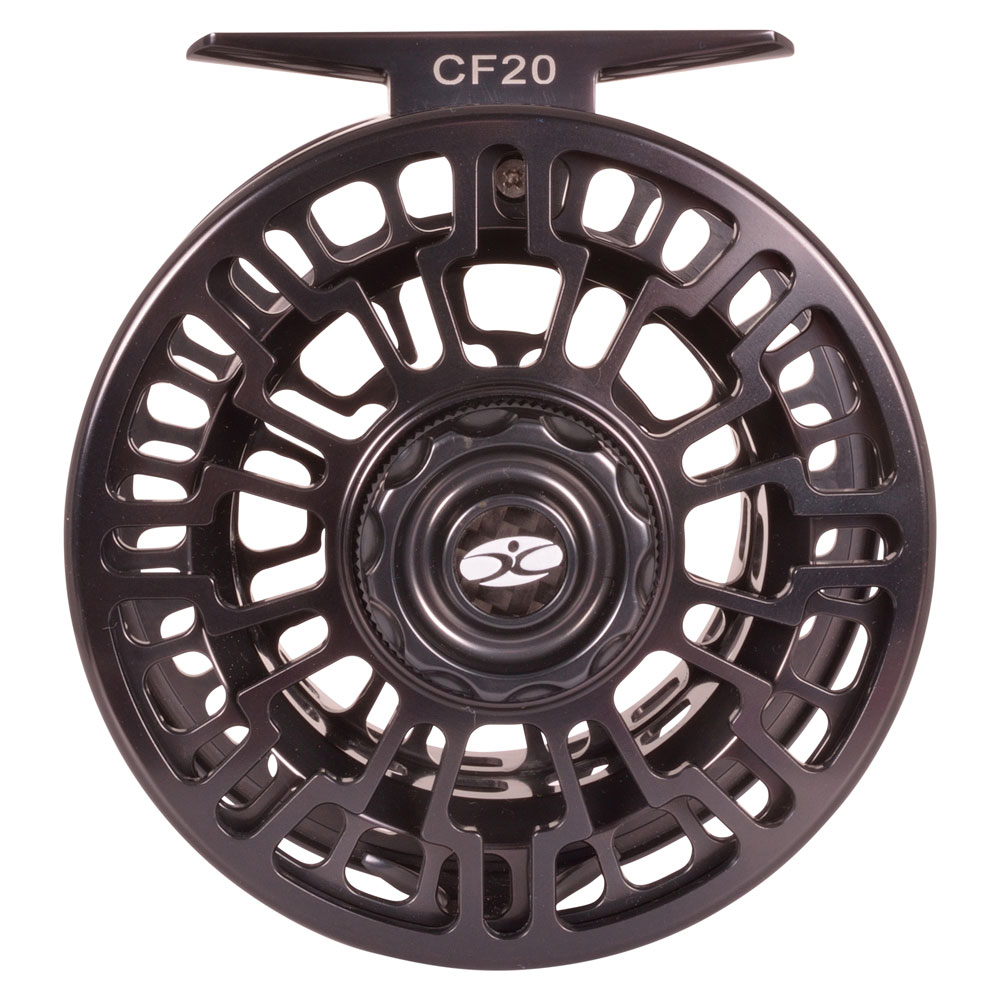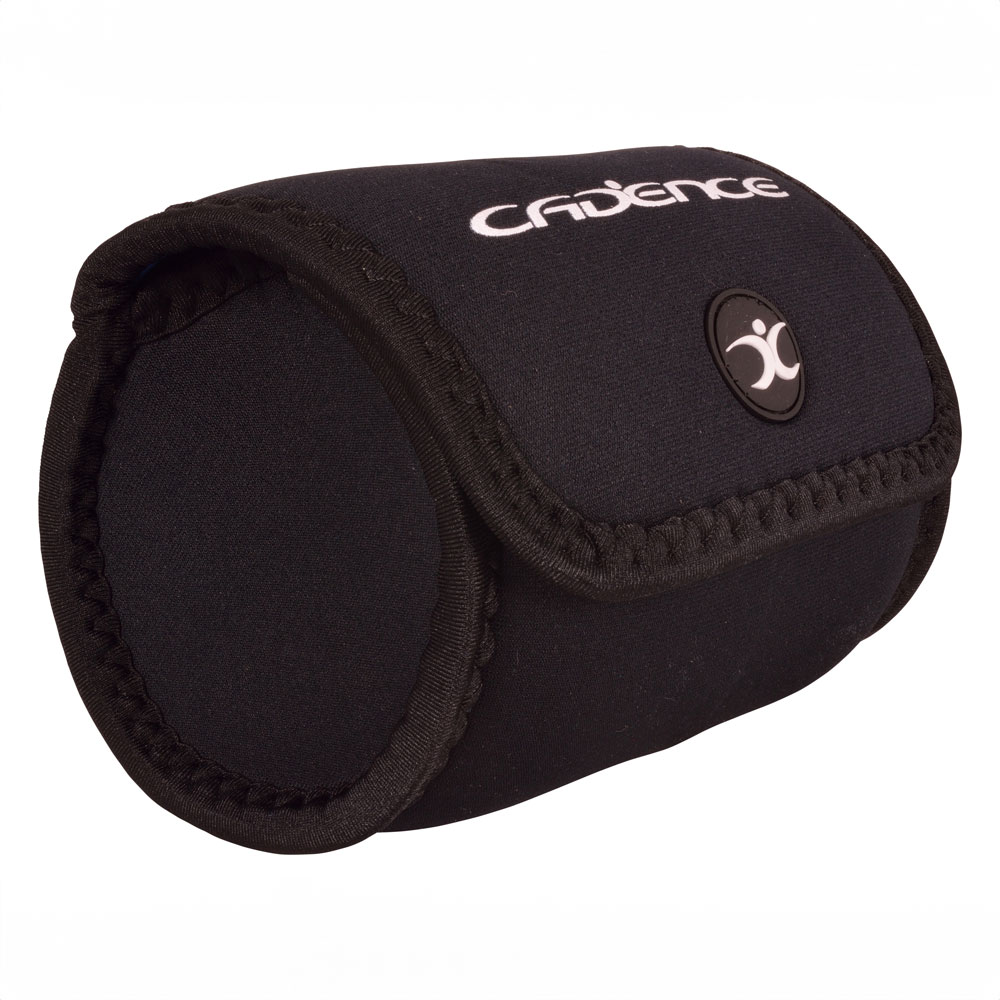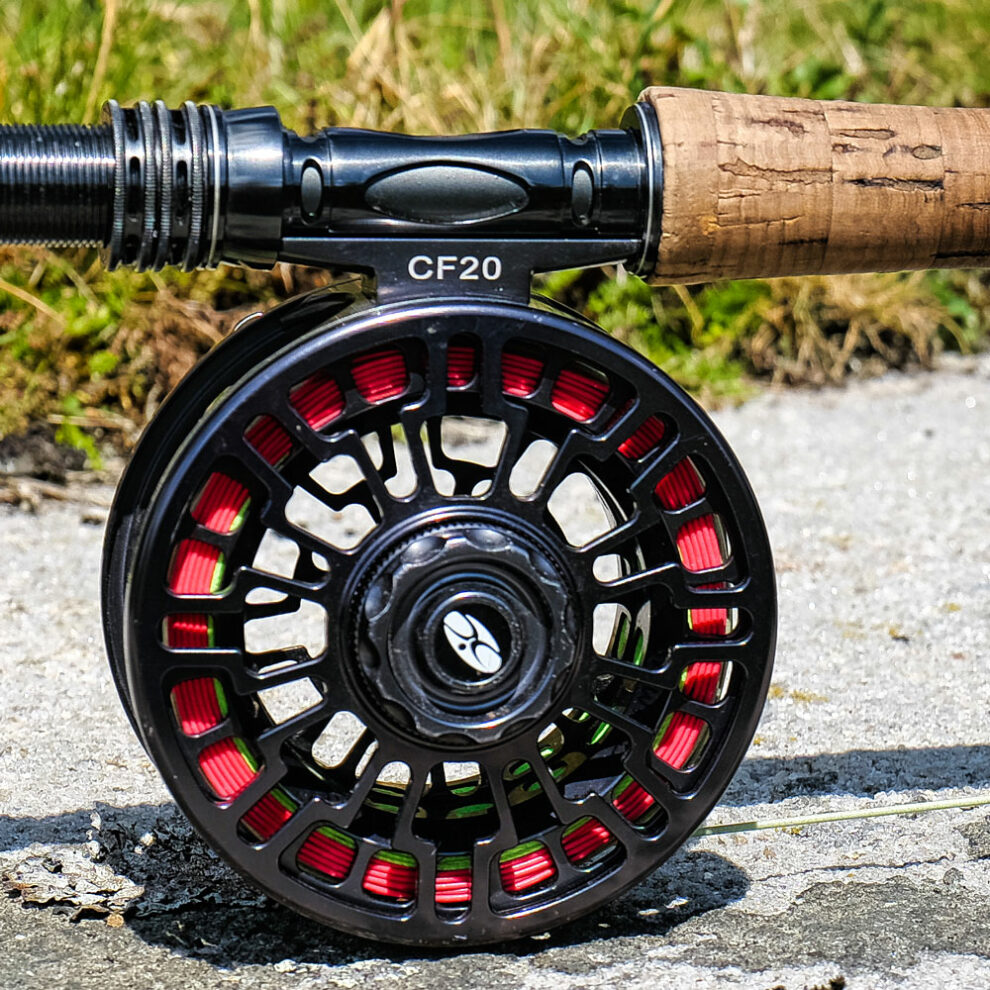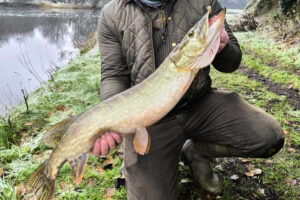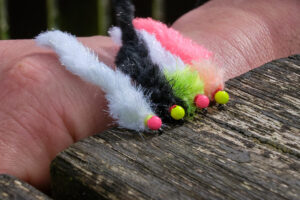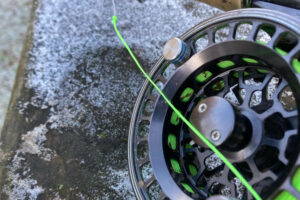What is the purpose of a fly reel? A question that has many answers. So, we’ve purchased a lovely new rod, and it is precisely what we wanted. It’s light, the action is perfect and most of all, we’re confident with it and have the confidence to conquer the angling world with our new found best friend!
When it comes to dressing our rod with a reel, we sometimes think “all if does is hold line” which is correct, but only ticks one box. There are many boxes we need to tick to really gain the true benefits that come with having a balanced fly fishing outfit.
Let’s have a look at the Cadence CF20 5/6 Fly Reel. Weight wise, this reel is 134g, 4.7oz in old money. It uses a carbon drag system, that gives it a smooth, constant drag pressure, throughout its drag range and in different conditions. The drag system is important to me as I use this reel on a 6wt rod for rainbow trout. I rely on a smooth drag system — this one is butter smooth.
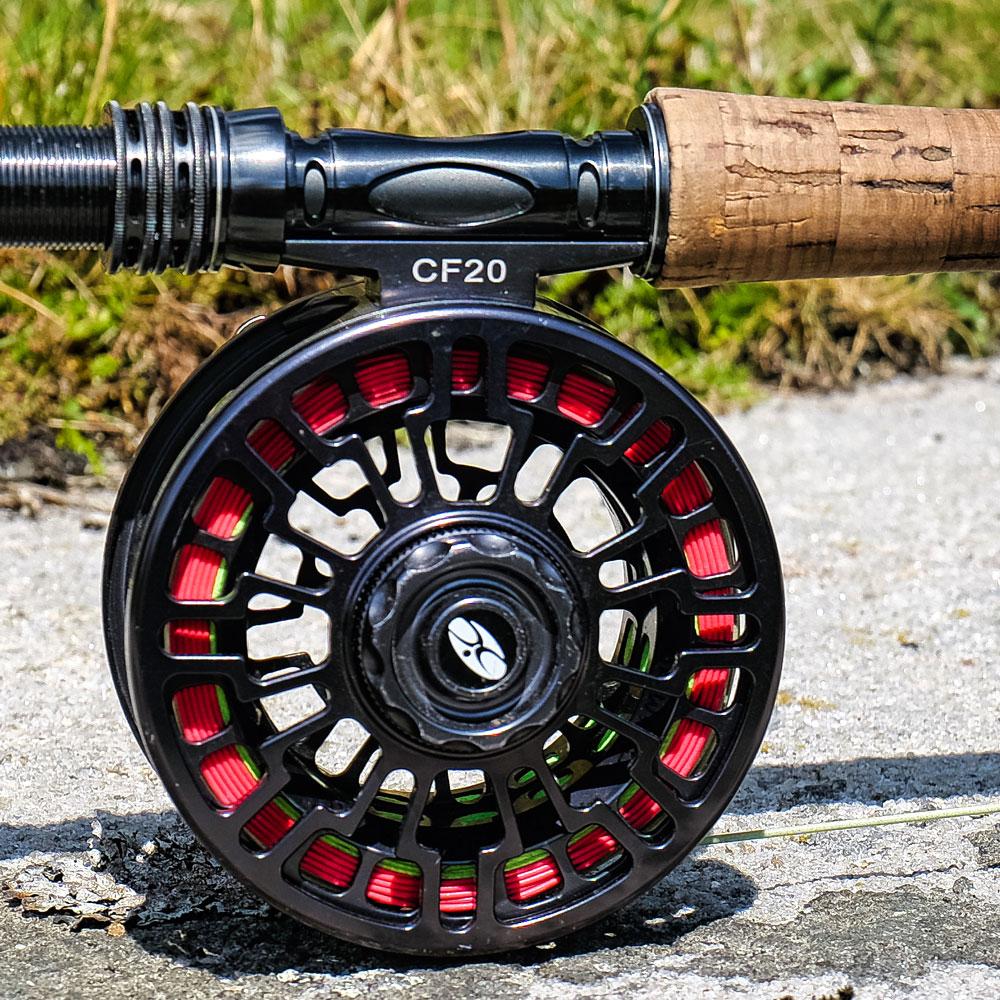
A large arbour I tend to prefer, as I find smaller arbours encourage memory in my line, if I haven’t used the line for a while.
The reel can be switched from left to right hand wind easily, which is a great advantage to me as a guide, as I rarely know which hand my clients prefer to wind with until the day we meet.
Now I’ve spoken about the weight of the reel, let’s look at the true benefits of having a balanced outfit. Where should or does the rod balance? The rod should balance on the trigger finger, what we refer to as the trigger finger changes with our grip.
If you prefer your thumb on top of the grip, then the index finger is your trigger finger and the rod should balance there.
If you prefer your finger on top of the grip, the middle finger becomes the trigger finger and balance point for the rod.
With a well balanced outfit, neither the rod nor the reel are pulling one way or another. This keeps the rod in position with no effort, our grip can be looser reducing fatigue, allowing the rod to recover quickly and more efficiently at the stop point of the cast. This helps with our casting loop, too.
Gripping the rod too tightly will affect the result of your casting and can cause aches and pains in the arm and wrist. While fishing, we are there to relax, having your set-up properly balanced is a big step towards maximising your enjoyment of fly casting and fishing.
Once the rod is balanced, so is the angler, you’re no longer trying to balance the rod yourself by changing your grip or moving your hand further back or forward on the handle.
On the 3wt rod, the reel sits back a little further and is tightened from the front, giving a high rod tip balance position that covers you when high sticking. This is great as the reel is a 3/4wt so having a spare spool allows us to switch to a 4wt line for use on our 4wt rod and still hold balance.
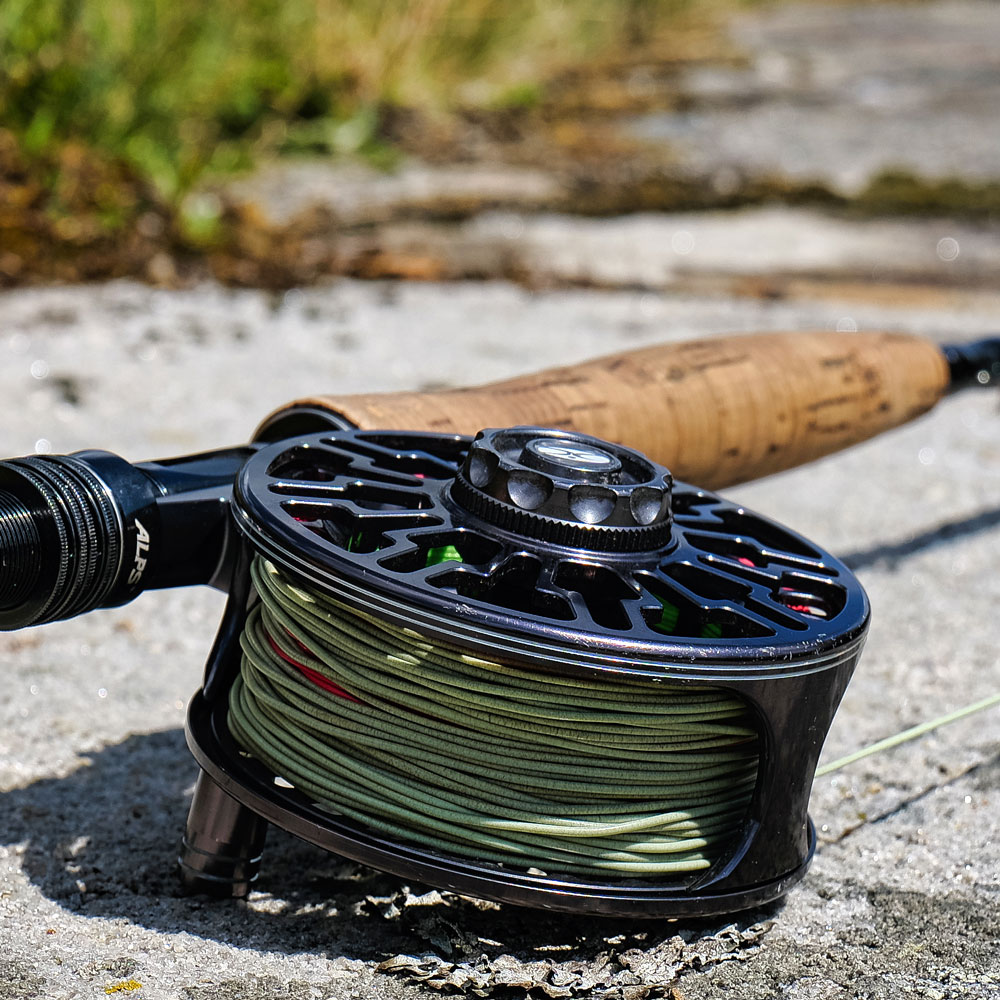
Having a spare spool is useful in other ways also, as I like to over line the rod on breezy days to help me punch into a breeze. I keep one line a size up on my spare spool with the simple switching system, it makes it rapid and easy to change over. Another example would be if tight lining using the CSM Nymph Line, I can switch to a CSM #3 WF for dry dropping, again, super-efficient and just a click away.
All Cadence CF20 Fly Reels come with a free aluminium spare spool, as standard.
I like how simple it is to change the spool and access the vitals to keep the reel well maintained. I have had reels in the past that you push the reel centre out but found at times it was troublesome and hard on the rubber seals of the spool or reel if changing often. The lever on the inner spool pushes to one side and the spool slides off, ready for the next one. Simplicity at its best, but most of all, it’s effective and efficient.
The reels come with a neoprene case to keep them protected. The case has room for the spare spool that comes free with the reel.
Cosmetically, this is a stunning reel with a machined aluminium frame and handle. It’s a fresh, crisp reel — and clearly designed by an angler.
